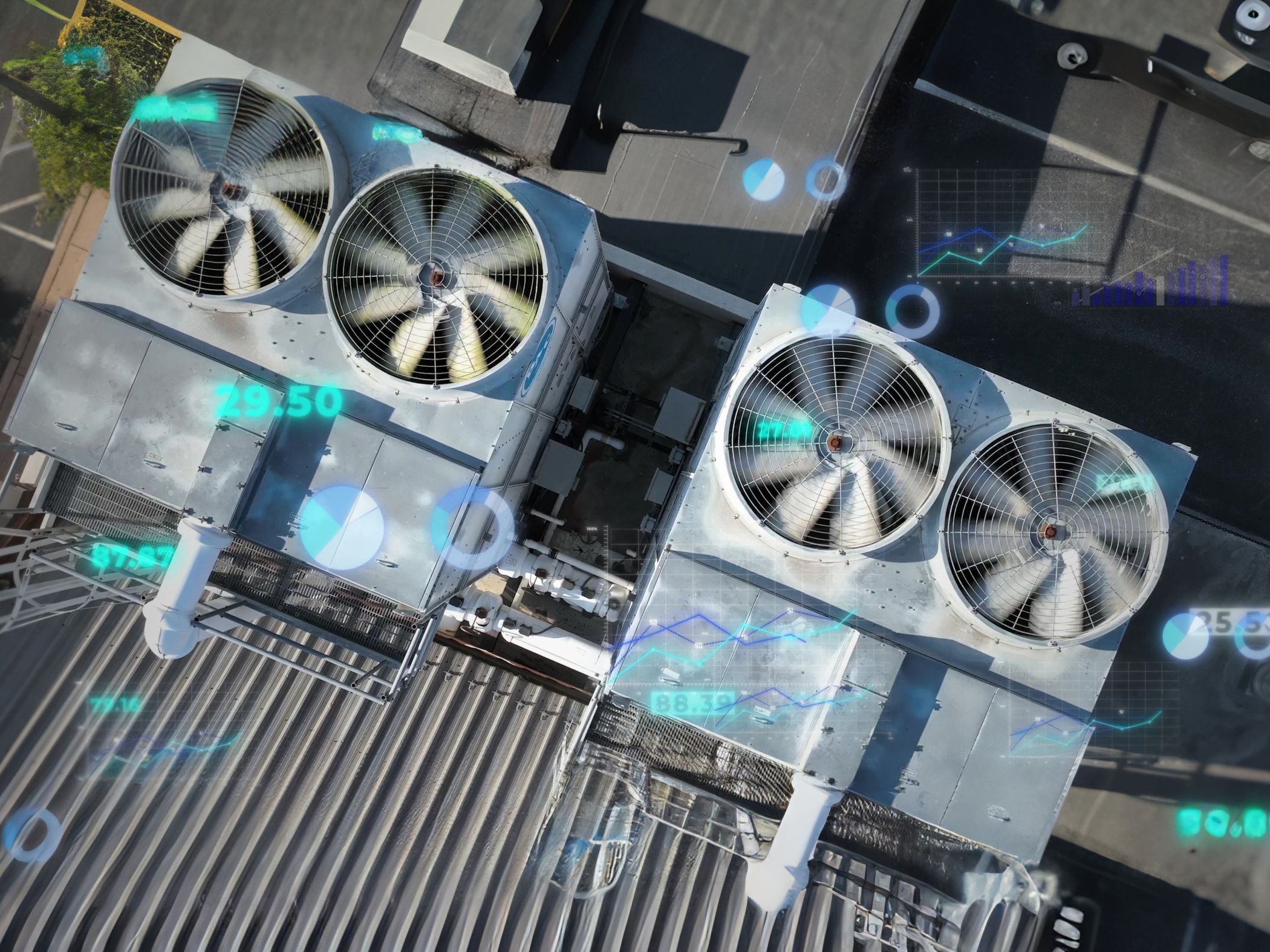Smart HVAC Systems Enhance Comfort and Savings

HVAC makes up more than half of commercial building energy use, according to the U.S. Department of Energy. While there have been many technological advances over the years, the basic functionality of commercial HVAC systems has remained the same for decades. Today, Internet of Things (IoT) connectivity, data analytics and machine learning are combining to create smart HVAC systems that revolutionize indoor comfort.
Smart HVAC system components
Smart HVAC systems use sensors that integrate with a building automation system (BAS). These sensors collect data about conditions throughout the building. The BAS, combined with advanced HVAC equipment, uses data from the sensors to adjust temperature, humidity and airflow to optimize comfort while reducing energy use. Some of the key components of a smart HVAC system include the following.
Sensors. Various IoT-connected sensors monitor temperature, humidity, occupancy and air quality. They provide real-time data to adjust the system for optimal performance and comfort.
Building automation. BASs have existed for some time, but recent advancements have made them more powerful and easier to use. The integration of smart HVAC systems with BASs allows for real-time monitoring and control of HVAC equipment.
Machine learning. While BASs and smart technology have been around for a while, the advent of artificial intelligence (AI) has taken smart HVAC system capabilities to a whole new level. Data analytics platforms can process vast amounts of data collected from various building sensors and identify inefficiencies or opportunities for optimization. AI-driven learning algorithms take this analysis a step further by predicting future HVAC system performance and suggesting adjustments in real time.
Demand control ventilation. This advanced HVAC technology lets you fine-tune building conditions based on input from occupancy or carbon dioxide sensors. When utilization levels drop below design-based occupancy rates, this specialized ventilation equipment reduces your outdoor air intake, which decreases energy usage.
Variable speed drives. HVAC fan and pump motors typically operate at a single speed despite the system's varying loads. Variable speed drives can save energy by matching the motor speed according to the needs of the driven load.
Benefits of smart HVAC systems
Energy savings. Smart HVAC systems optimize energy use by adjusting heating, cooling and ventilation based on real-time data from sensors and occupancy patterns, resulting in significant energy savings.
Improved comfort. By continuously monitoring and adjusting the indoor environment, smart HVAC systems maintain optimal temperatures and air quality, thereby enhancing occupant comfort.
Optimized maintenance. Smart systems can predict when maintenance is needed, reducing the risk of unexpected breakdowns and extending the equipment's lifespan. This proactive approach minimizes downtime and maintenance costs.
Remote monitoring and control. With smart functionality, you can monitor and control your system remotely, allowing you to make adjustments or spot potential issues quickly without having to be on-site.
Smart HVAC systems do come with significant upfront costs. These include component installation, software and integration, as well as training and technical support. Cybersecurity is another issue. You must ensure that your system is protected from potential hackers or other cyber threats.
Despite these costs, upgrading to a smart HVAC system is a sound investment for facilities looking to improve energy efficiency, comfort and sustainability.
If you need help finding an energy-saving HVAC partner, look no further than our Trade Allies.
Return to newsletter